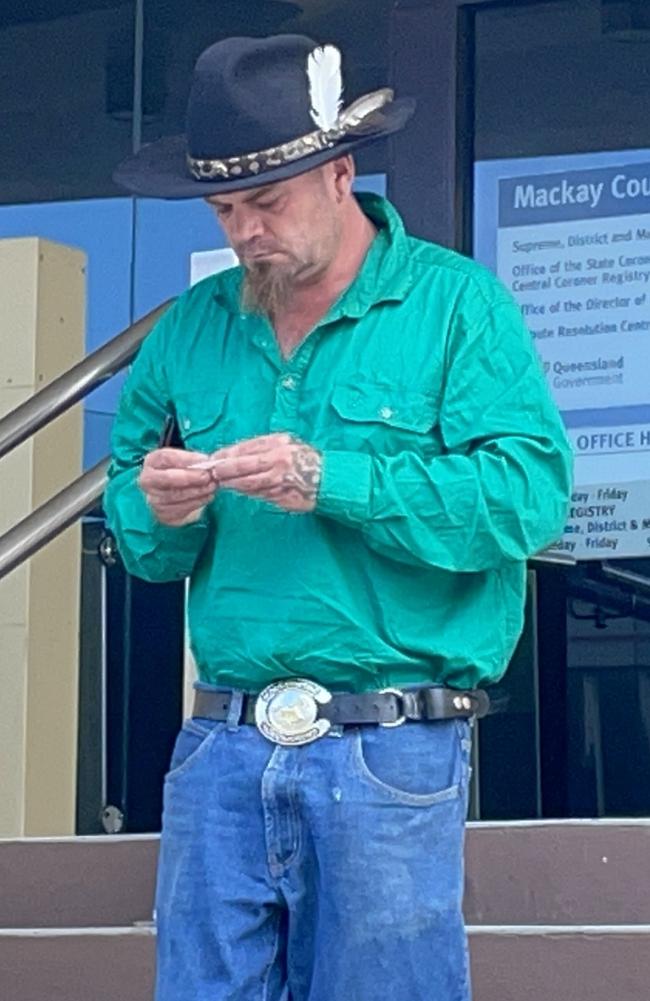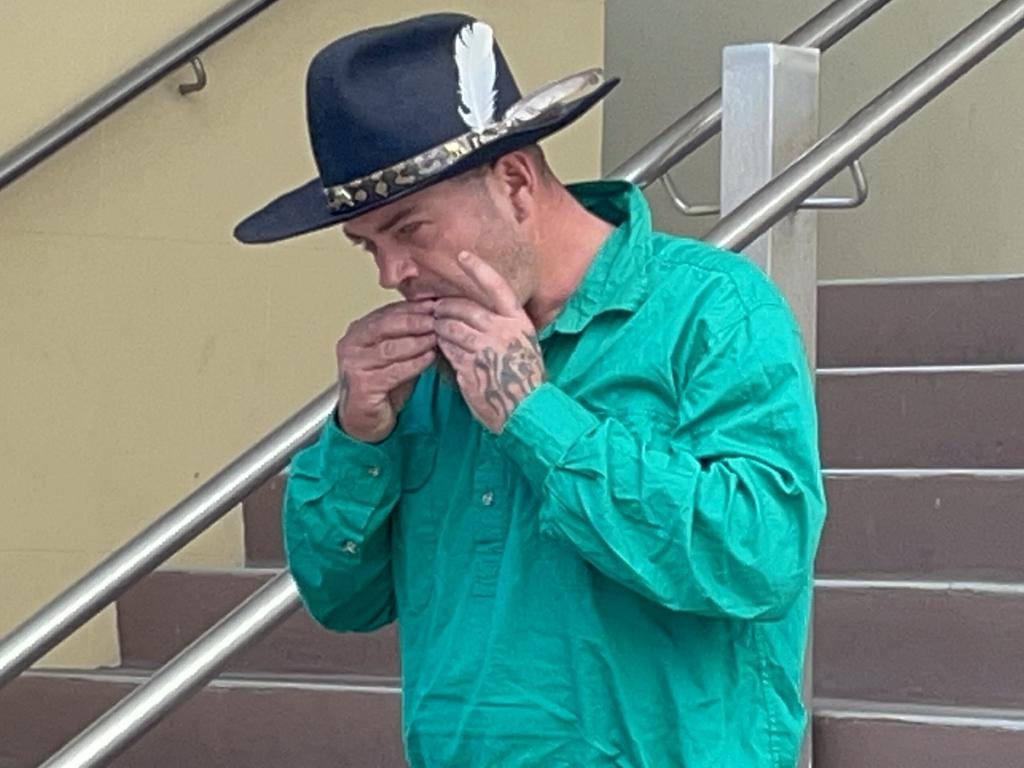Jonathan Robert Rasmussen pleads guilty to executing two rescue dogs
A Queensland man who shot his two rescue dogs in a fit of rage, and then buried them in the backyard before police arrived, says he was ‘overcome with remorse’. Read why he did it. Warning: Graphic content.
A man who executed his two rescue dogs in a fit of rage after they chewed wiring on his trailer must pay a whopping fine as horror details are revealed.
Neighbours heard the sound of gunshots and dogs whimpering in distress on March 5, 2023, prompting calls to police.
Nearby Jonathan Robert Rasmussen had just shot both his animals in the head at his home in Bucasia, but they did not die instantly.
Prosecutor Ruth Whisker said he had shot his dogs “for playing up”.
“He elected to kill them despite the fact there were other options … other than executing his dogs,” Ms Whisker said.
The court heard he did not want to take the animals to the RSPCA “because they’d just be put down anyway and he was just trying to save everyone time and money”.
Legal Aid Queensland solicitor Geoff Govey said both animals had been rescue dogs Rasmussen’s partner had adopted, the first one a bull mastiff about two years before this incident.

‘IT WAS VICIOUS AND IT WOULD BITE’
“It must have had a violent upbringing because it was vicious and it would bite,” Mr Govey said.
So the couple then got a smaller dog “a gentle soul” to try and curb its behaviour, the court heard.
“That didn’t work, that dog then learnt the behaviour from the eldest dog,” Mr Govey said.
“They had two dogs that were difficult … they had previously chewed the underside of a bus that they owned.”
On the day of the shooting Rasmussen had argued with his partner and then found out the dogs chewed the underside of the trailer wiring.
“It was at that point that he says that … he reacted in a temper,” Mr Govey said.
‘OVERCOME WITH REMORSE’
The court heard Rasmussen had to access a gun safe that did not belong to him and loaded the firearm.
“He was overcome with remorse when the police got there,” Mr Govey said.
“He instructs me that he was crying realising the stupidity, the callousness of what he’d done.”
He buried the dogs, and made admissions to police.
Mr Dwyer said the crux of the matter was how long it took for the dogs to die.
“There’s a difference between a dog being hit over the head with a hammer and lying there, being stabbed, taking days, hours to die or one that is shot in the head and dies two seconds later,” Magistrate Damien Dwyer said.
“I have to know that to see what degree of cruelty was imposed on the dogs.”

Ms Whisker said she did not have an exact timeline for how long the dogs were in distress.
“They were deceased by the time police arrived,” Ms Whisker said.
Rasmussen pleaded guilty to animal cruelty prohibited, which has a maximum penalty of three years jail for almost a $350,000 fine.
‘NOT A VERY GOOD SHOT’
“Really I have to take it down … that he’s not a very good shot,” Mr Dwyer said, based on the facts tendered in court.
“That he didn’t kill the dogs instantly, that the dogs died some brief period afterwards.”
The case sparked a debate during proceedings after Ms Whisker raised an argument of trauma to the second dog shot in having to witness the initial execution.
“Is there some evidence that dogs can see what’s coming?” Mr Dwyer asked.
“It’s anecdotal evidence that cows if they’re slaughtered have fear … as they’re watching the other cows,” Mr Govey said.
The court heard this offending was out of character for Rasmussen, who has no like entries on his criminal history.
Mr Dwyer accepted the dogs died a short time after being shot, but found a strong punishment was needed.
“If the parliament says its that serious, it’s up to the courts to accept that it’s serious and impose serious penalties,” Mr Dwyer said.
Rasmussen was fined $10,000 but convictions were not recorded.





